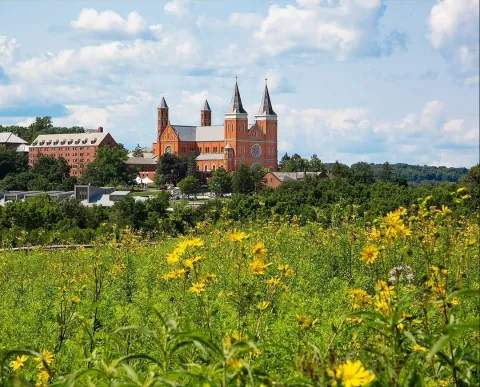Latrobe
The first explorer to cross the Allegheny Mountains heading west and record his journey was Christopher Gist, a surveyor for the Ohio Company of Virginia. About 250 years ago, Gist came over the scenic Chestnut Ridge into Loyalhanna (present day Ligonier), following the waters into the area known today as Latrobe.
Pennsylvania Railroad engineer Oliver Barnes initiated the development of a community in 1852, which was later incorporated as the borough of Latrobe in 1854. He named the new borough after his best friend, Benjamin Latrobe, who was a railroad engineer. Thanks to its strategic location on the Pennsylvania Railroad route, Latrobe experienced significant growth and became an important industrial hub.
In the early 1770s, religious services were held on John Proctor’s farm at Proctor’s Tent, which was located between what is currently St. Xavier’s and Unity Cemetery in Unity Township. Proctor’s Church was the predecessor of what later became Unity Chapel, which is today maintained by the Latrobe Presbyterian Church. The nearby area later became the site of a settlement established by Benedictine monks from Germany, led by Brother Boniface Wimmer, who founded Saint Vincent College and Monastery.
Other Latrobe Area communities have fascinating histories as well. Youngstown, for instance, was established more than 50 years before Latrobe, and it was a post town along the historic Forbes Road. Because it was at the foot of the mountains, it was a convenient place for pack horses, wagons, and stage coaches to stop before proceeding over, or after descending, Chestnut Ridge.Today, Latrobe City has a population of about 9000 and a retail trading area of 67,000. With its relatively small size and proximity to metropolitan Pittsburgh, Latrobe offers an ideal balance of country living and urban convenience.
There is a wealth of diversified employment and business opportunities, including an outstanding complement of facilities dedicated to the health, education, safety, and recreational needs of its residents.
